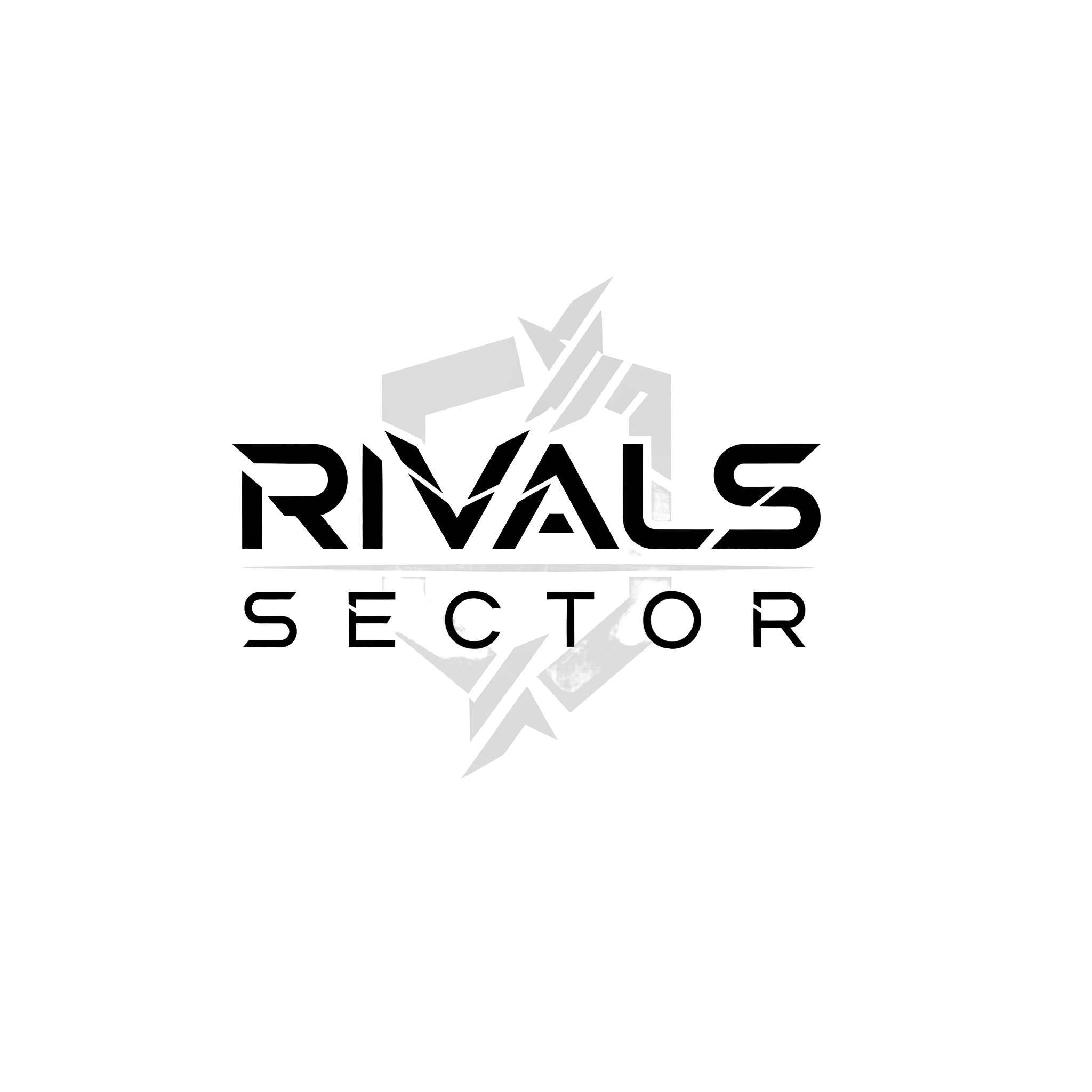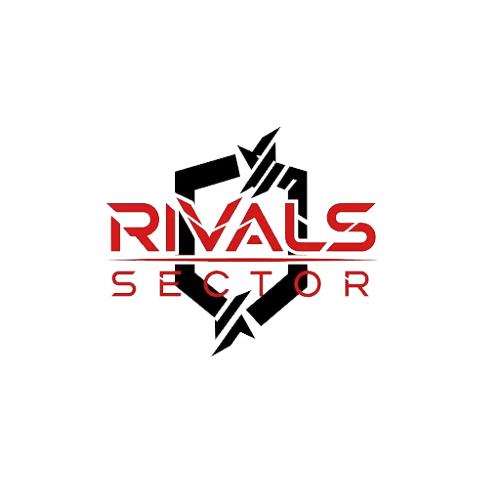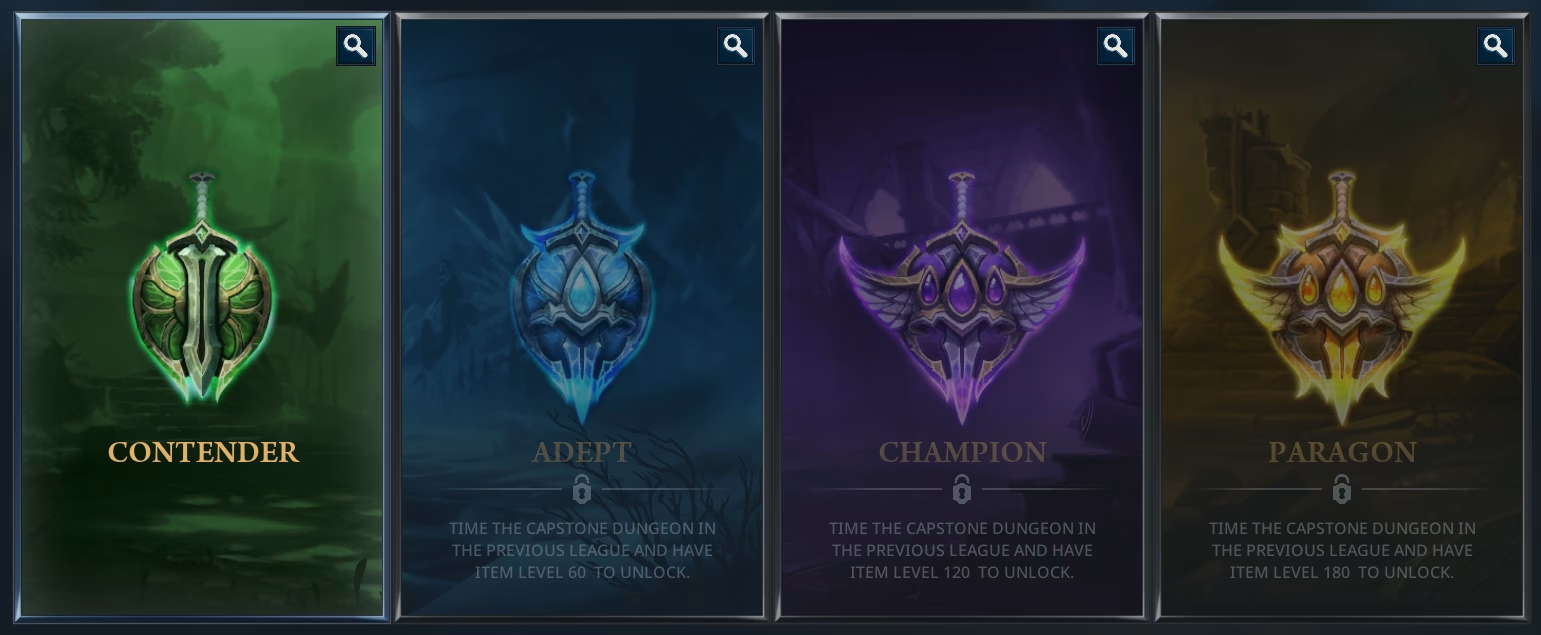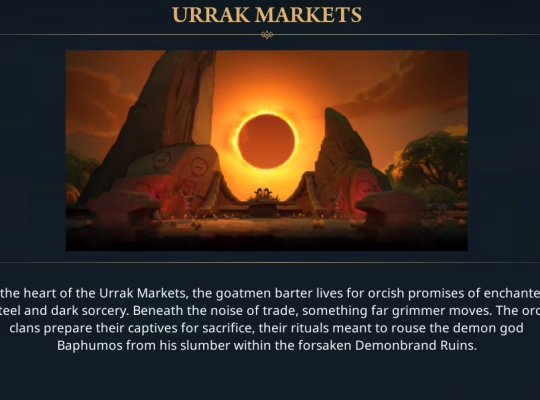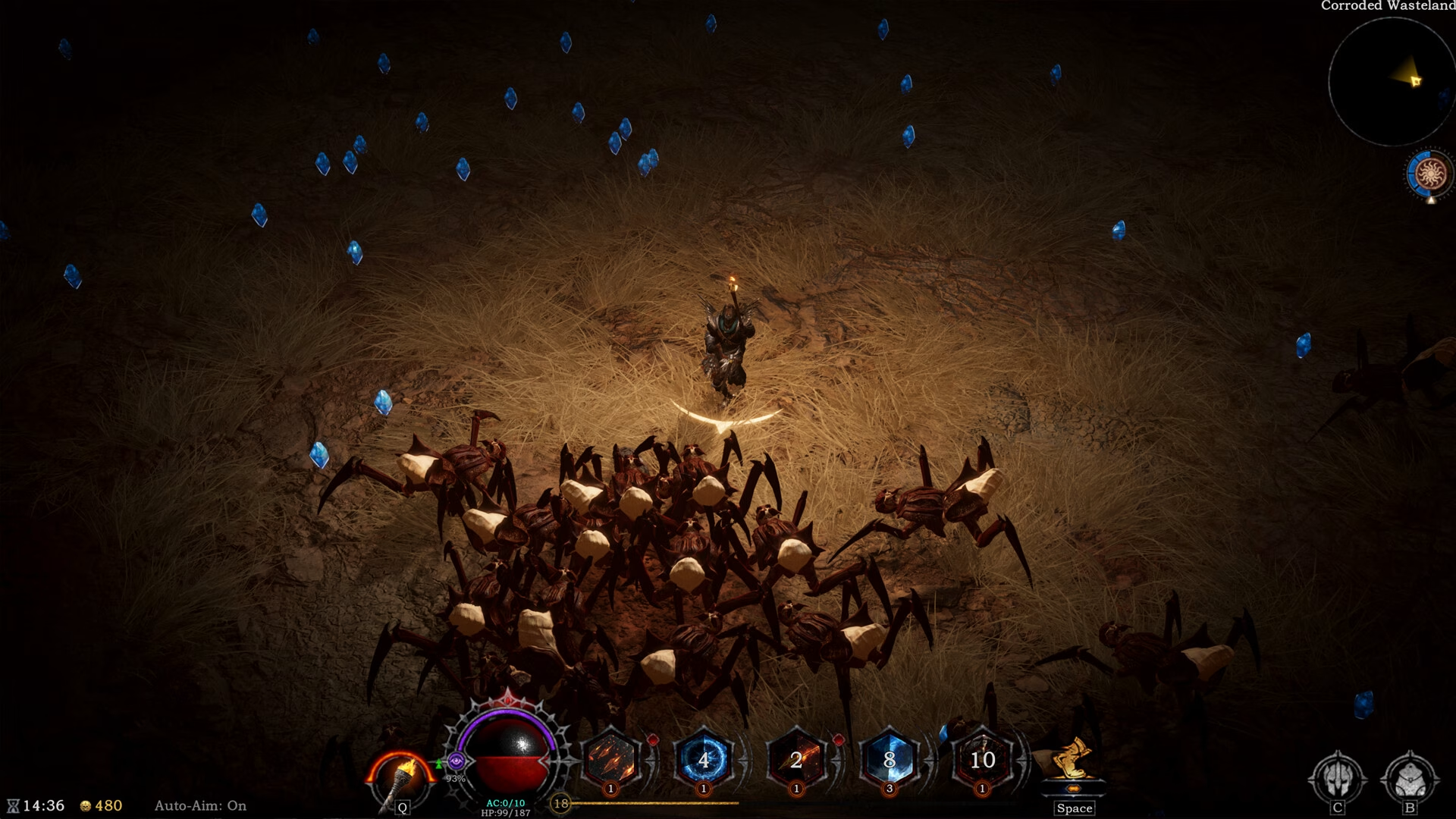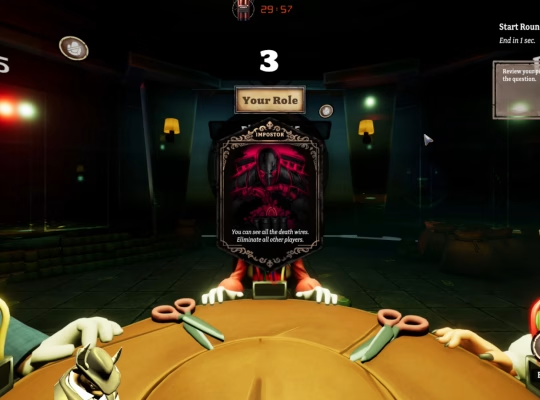Hey everyone, Elias here from RivalSector.com. As a gamer who has sunk thousands of hours into ARPGs and MMOs, my eternal search is for the “perfect” endgame. We all know the loop: grind gear to do harder content to get better gear. But what if a game just… skipped the fluff? What if it was all endgame, all the time?
That’s the radical promise of Fellowship, the new title from Chief Rebel. They are not calling it an MMO. They are calling it a “MODA” – a Multiplayer Online Dungeon Adventure. The entire game is the endgame dungeon run, inspired by MOBA heroes, ARPG loot, and MMO “holy trinity” (tank, healer, DPS) mechanics.
With a game this focused, the progression system isn’t just a feature, it’s the entire backbone. I have been digging into their “Challenge Mode,” and let me tell you, it looks like a brilliantly structured ladder designed for PVE heroes. Today, I’m breaking down the entire ranking system for you, from your first steps as a Contender to the final, endless grind in Eternal Mode.
Challenge Mode: Where the Real Game Begins
First, let’s get the lay of the land. Fellowship offers two main ways to play: Quick Play and Challenge Mode.
Think of Quick Play as your training ground. It offers faster, 10-15 minute runs with normalized gear. It’s perfect for testing a new hero, learning mechanics, or just getting a quick fix.
But Challenge Mode? That’s the main event. This is the ranked, competitive PVE ladder where “heroes become legend.” This is where your gear, your skill, and your team coordination are put to the ultimate test. To even start, you need to grab a set of starting equipment from Quartermaster Novak. From there, your journey up the mountain begins.
The Four Leagues: Climbing the Ladder
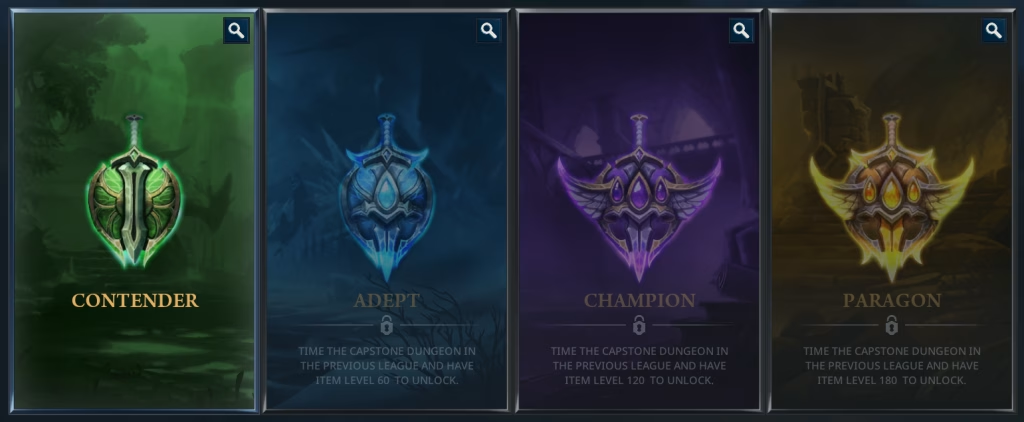
The core of your progression in Challenge Mode is the League system. It’s a clear, four-tiered path that structures your entire climb.
- Contender (Green)
- Adept (Blue)
- Champion (Purple)
- Paragon (Gold)
This isn’t just a simple jump from one to the next. Each League is broken down into seven distinct levels of increasing difficulty (Contender 1, Contender 2, all the way to Contender 7). To unlock the next difficulty level, you simply have to successfully complete the highest one you have access to.
However, things get serious starting at difficulty +4. This is when the timer is introduced. From this point on, you must complete the dungeon within the time limit to progress.
At difficulty +7 of any given League, you unlock that League’s “Capstone Dungeon.” This is a massive, three-boss instance that acts as your final exam. To advance to the next League, you must complete this Capstone Dungeon, beat the timer, AND meet a specific Item Level requirement.
Here’s a simple list of the unlock requirements:
- To Unlock Adept: Beat the Contender Capstone (“Cithrel’s Fall”) and have Item Level 60.
- To Unlock Champion: Beat the Adept Capstone and have Item Level 120.
- To Unlock Paragon: Beat the Champion Capstone and have Item Level 180.
This system is brilliant, in my opinion. It creates two clear goals: pushing your personal best difficulty (the 1-7 levels) and passing major skill checks (the Capstones). The Item Level gates also act as a smart sanity check, ensuring you are not trying to tackle content your gear simply cannot handle.
Why Climb? The Loot and Power Breakdown

So, why bash your head against a timed +7 Capstone? For the glorious loot, of course. Fellowship smartly layers its reward systems, introducing new types of power as you climb the Leagues. You are not just getting gear with bigger numbers, you are unlocking entirely new ways to build your hero.
General rewards from every dungeon include Equipment, Gold, and rare Materials. But the game-changing stuff is tied directly to the Leagues you unlock.
| League Tier | Key Reward Unlocks | My (Elias’s) Analysis |
| Contender | Basic Equipment, first Set Bonuses | This is your foundation. Set Bonuses are the first major power spike, encouraging you to hunt for specific armor sets. |
| Adept | Gems, Socketed Equipment, Weapons with Abilities | Now we get customization. This is where you start tailoring your gear with gems and finding weapons that add new skills to your bar. |
| Champion | Weapons with unique Weapon Traits | This is where build diversity explodes. A unique trait can completely change how an ability functions, opening up new playstyles. |
| Paragon | Legendary Weapons of immense power | These are the chase items. The “god-rolls.” These Legendary weapons are the pinnacle of power and what you will grind for. |
On top of this, progression is also tied to a “Starmap,” which is a parallel system for unlocking talent points and abilities. This means your climb through the Challenge Mode Leagues is directly feeding into your hero’s permanent, foundational power.
Grouping Up: Matchmaking for Solos and Stacks
As a “MODA,” Fellowship is built for co-op. How you queue for Challenge Mode depends entirely on your group size.
Fully Premade Parties (4 Players):
If you have a full squad of four, you have total control. You can select any Dungeon and any difficulty level that all four party members have unlocked. This is the ideal way to play, letting you target specific dungeons for loot or push for your personal best.
Solo Heroes and Partial Parties (1-3 Players):
This is where I’m most impressed. If you are playing solo or with a friend or two, you cannot queue for a specific dungeon. Instead, you select the League you want to play in (e.g., “Adept”) and use the “Find Game” button.
The system will then matchmake you with other players based on a few key factors:
- Similar Item Level: To ensure everyone is on a roughly equal power footing.
- Balanced Roles: The game requires the holy trinity. This matchmaking ensures you get a tank, a healer, and DPS, eliminating those “all-DPS” group-finder nightmares.
Once a full group is formed, you do not just get thrown into a random dungeon. Instead, the group votes on a dungeon from a “curated pool suited to the group’s gear and experience.” This is a fantastic compromise. It gives solo players agency without letting one person dictate the run.
The system will even loosen its matchmaking criteria if queues are long, but it promises to never match you with players outside of your chosen League. You can even disable this loosening if you only want to play with heroes of similar experience, though it may mean longer queue times.
The Endgame’s Endgame: Eternal Mode

So, you have done it. You have climbed through Contender, Adept, and Champion. You have conquered the Paragon League and defeated its final Capstone, the “Ransack of Drakheim.” What’s next?
Welcome to Eternal Mode.
This is not just another league. This is the true, repeatable, “push-your-limits” endgame. Here’s what I have gathered about it:
- It’s an Endless Mode: The difficulty in Eternal Mode scales infinitely. Even after you hit the final Item Level cap (330), the challenge will keep increasing.
- It’s for the Best of the Best: This is where top players will compete on leaderboards, testing the absolute limits of their builds and team coordination.
- It Requires a Full Party: This is the most critical detail. You cannot use the “Find Game” matchmaking for Eternal Mode. It requires a fully premade party of four to even queue.
This is a bold move by Chief Rebel. They are essentially stating that the absolute hardest content in the game is reserved for organized teams. As a solo player, I have mixed feelings, but as a long-time raider, I get it. This is content designed around perfect, high-level communication that you just cannot get in a random PUG.
My Final Take
Fellowship’s Challenge Mode looks like a masterclass in focused PVE progression. It strips away the leveling grind and focuses purely on the dungeon run. The ladder is clear, the rewards are layered intelligently, and the matchmaking system respects both solo players and dedicated teams.
It creates a perfect loop: climb the 1-7 levels to get gear, use that gear to beat the +7 Capstone, unlock the next League, and gain access to entirely new power systems (like Gems or Traits) to start the climb all over again.
I am genuinely hyped to dive in. This system seems to respect my time while still offering the deep, high-skill-ceiling climb that I crave. That “full-party” requirement for Eternal Mode is a spicy, divisive choice, but it sets a clear goal for the most dedicated teams.
What do you think of this “MODA” approach? Does a game that is all endgame dungeons appeal to you? How do you feel about the Eternal Mode requirement? Drop your thoughts in the comments below.
For more deep dives into the mechanics of upcoming games, be sure to stay locked right here to RivalSector.com and our Gaming Insights category. Now if you’ll excuse me, I need to go theorycraft my Day 1 build.
